You know all of those sun-soaked, sprawling-sea images you see of Greece on social media? A lot of them are peak “Instagram vs. Reality.” That’s where your pal visiting Santorini has artfully cropped out the 300 other people fighting to take the same photo. That’s not all of Greece, of course (and thank goodness, because how could the locals stand it?), but it is the unfortunate reality for majority of the country’s tourism hot spots. Even Athens can be traffic logged, as wonderful and essential as a trip there may be.
Crete is the less crowded exception, and an expansive one at that. Here, you’ll enjoy some of the best recreation, food, hospitality, and history lessons the world has to offer. In this way, Crete is to Greece as La Paz or Mérida is to Mexico. While everyone else is flocking to Tulum, Puerto Vallarta, and Mexico City, there are equally brilliant, flavorful, hospitable, and culturally rich destinations to be found elsewhere.
Crete is still a popular destination
And while a visit to Crete is already going to be far less crowded than most other Greek islands, that’s not suggesting it’s without some bottle-necking. Everyone passing through Heraklion wants to see the Palace of Knossos and the capital’s archaeological museum. After all, this is Europe’s oldest established city, some 9,000 years old (with its oldest palaces nearly 4,000 years young). These historic stops are no secret to most travelers with Google, along with popular beaches like the pink-sand Elafonissi and picturesque Balos Lagoon, as well as the storied hike through the Samaria Gorge. We’re not suggesting you miss those stops. But we are suggesting you plan a trip to the island that doesn’t fully follow the script.
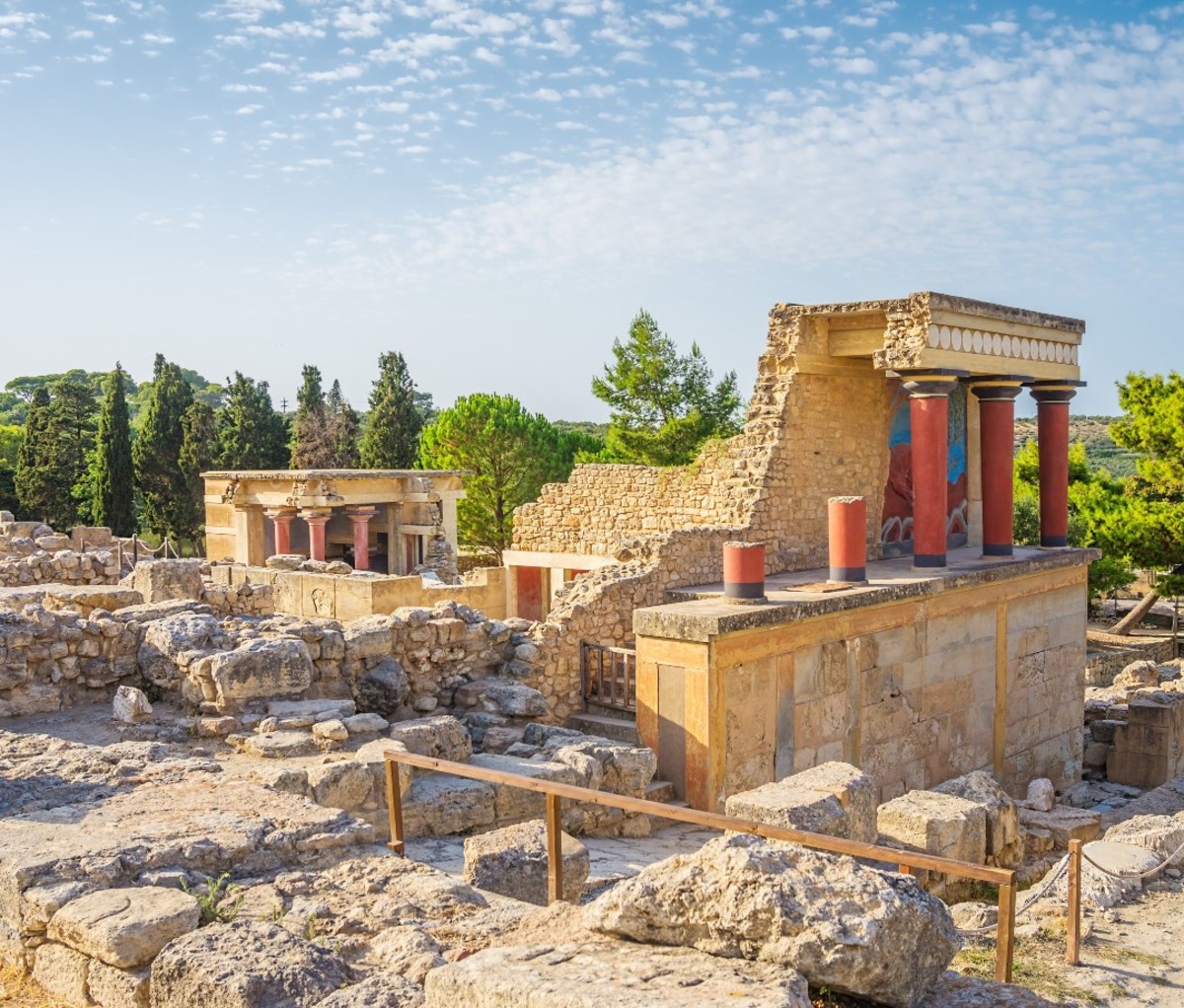
After all, one of the joys of Crete is indulging in Cretan culture. This is a land of storytellers, from the Minotaur to the supposed birth of Zeus in a Cretan cave. So, here’s how to structure your own storied visit to historic Crete—one as zen and delicious as Cretan life itself.
How to get to Crete—and get around It
Crete is easily accessible by plane. Either take a flight into its capital Heraklion (center north on the island) or cultural hub Chania (northwest) from most major EU destinations, or you can add it on to your Athens visit, with low-cost fares into most of Crete’s five or six primary cities. And yes, the island has that many “primary” cities, across its four regions and 3,200 sq. miles. It’s Greece’s largest island and the Mediterranean’s fifth largest, after Sicily, Sardinia, Cyprus, and Corsica.
While it’s easy enough to rent a car in Crete, consider how far you need to go on each leg. (Is it worth paying for a car for a whole week if you’re only driving long distances once or twice?) Most of Crete can be broken into manageable smaller bites, since capital Heraklion is only one to two hours from most destinations on the island. Even if you adhere to our advice and stay outside the bigger cities, just craft an itinerary that follows a linear path, and you won’t likely need a rental car, freeing yourself from that burden.
We find it’s just as easy (and most cost effective) to hire a taxi driver between cities, even if it’s an hour or two drive. They’re all accustomed to these long trips, but be sure to book them ahead of time through sites like Heraklion Cab or Chania Taxi if it’s that far. The English-speaking ones will chat your ear off and provide terrific local context, too. Many have a business card and will allow you to book them out privately.
Where to stay in Crete
Remember, unless you stay for two weeks or more, you probably will feel like you barely scratched Crete’s surface. Here are a few places to stay that can either maximize what you see, showcase someplace off the beaten path, or help you wind down at any point of the trip. What they have in common is that they’re outside the core cities. But they’re still easy to reach or to use as an anchor around the island. We’d even suggest staying between two or more of them, depending on the length of your visit to Crete; that way, you don’t have to double-back every day if you explore some new corner. (Oh, and they’ve all got private beachfront access, too, in case you don’t want to move a muscle.)
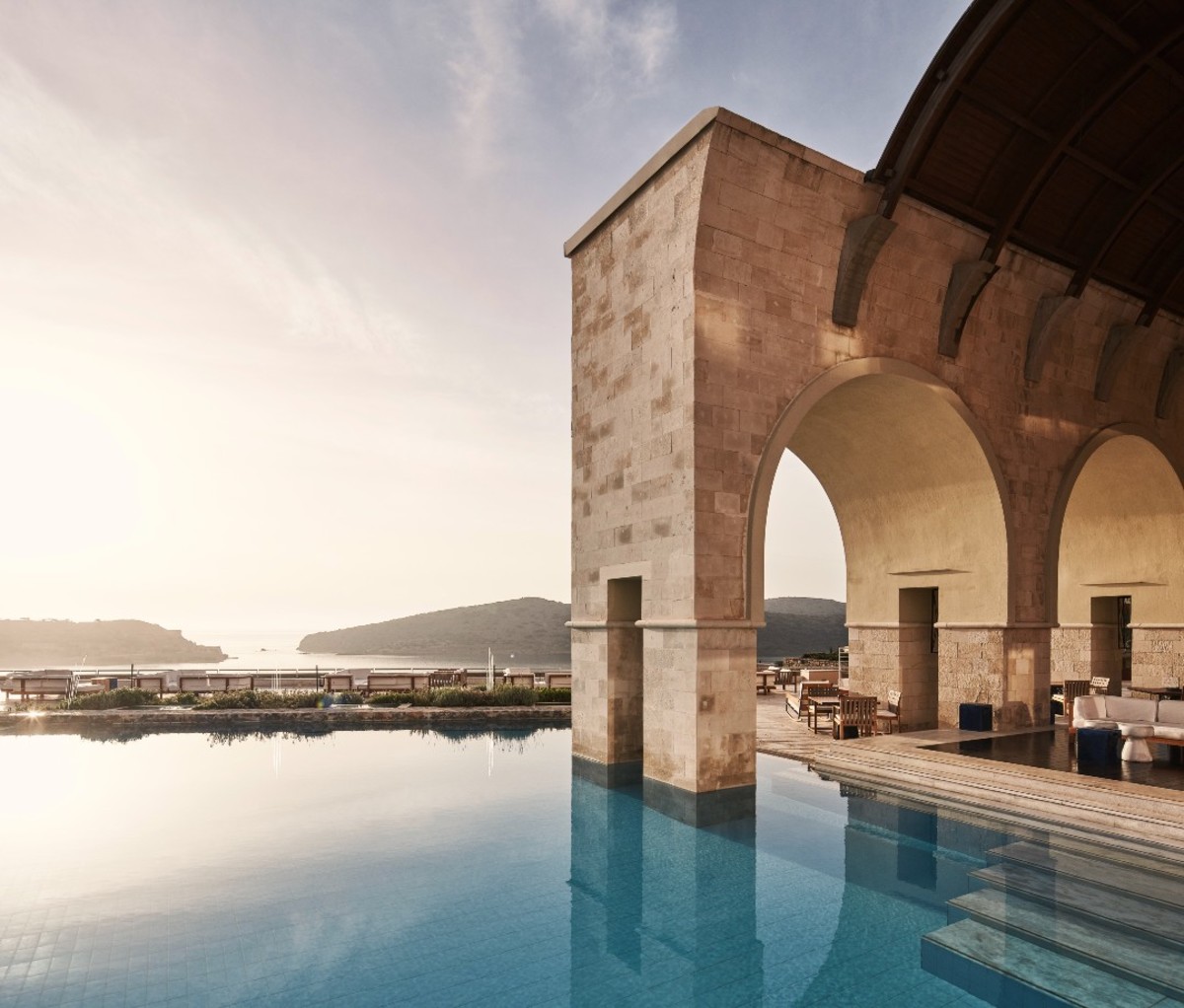
For a high-end anchoring: Blue Palace in Elounda
Blue Palace reigns supreme as Elounda’s best luxury resort. And that’s saying something, since Elounda itself reigns supreme as Crete’s most luxurious destination. What surprised us most about our stay here is how accessible it feels for mid-budget travelers despite clearly being the top of its game. This is where we tell friends to take their honeymoon, babymoon, and most rejuvenating getaways—and not just for the property’s infinity pools or private junior villas overlooking the Elounda Bay and storied Spinalonga Island. Blue Palace’s onsite restaurants are themselves among Crete’s best, from homespun Anthós, to taverna-style Blue Door, and if you tire of feta fare, try fresh and fusioned Asia Deep Blue. We booked an afternoon wine tasting on the hotel’s caique boat, one of many romantic couples activities on offer. But it’s the secluded, cove-like panorama that’s forever seared in our brains.
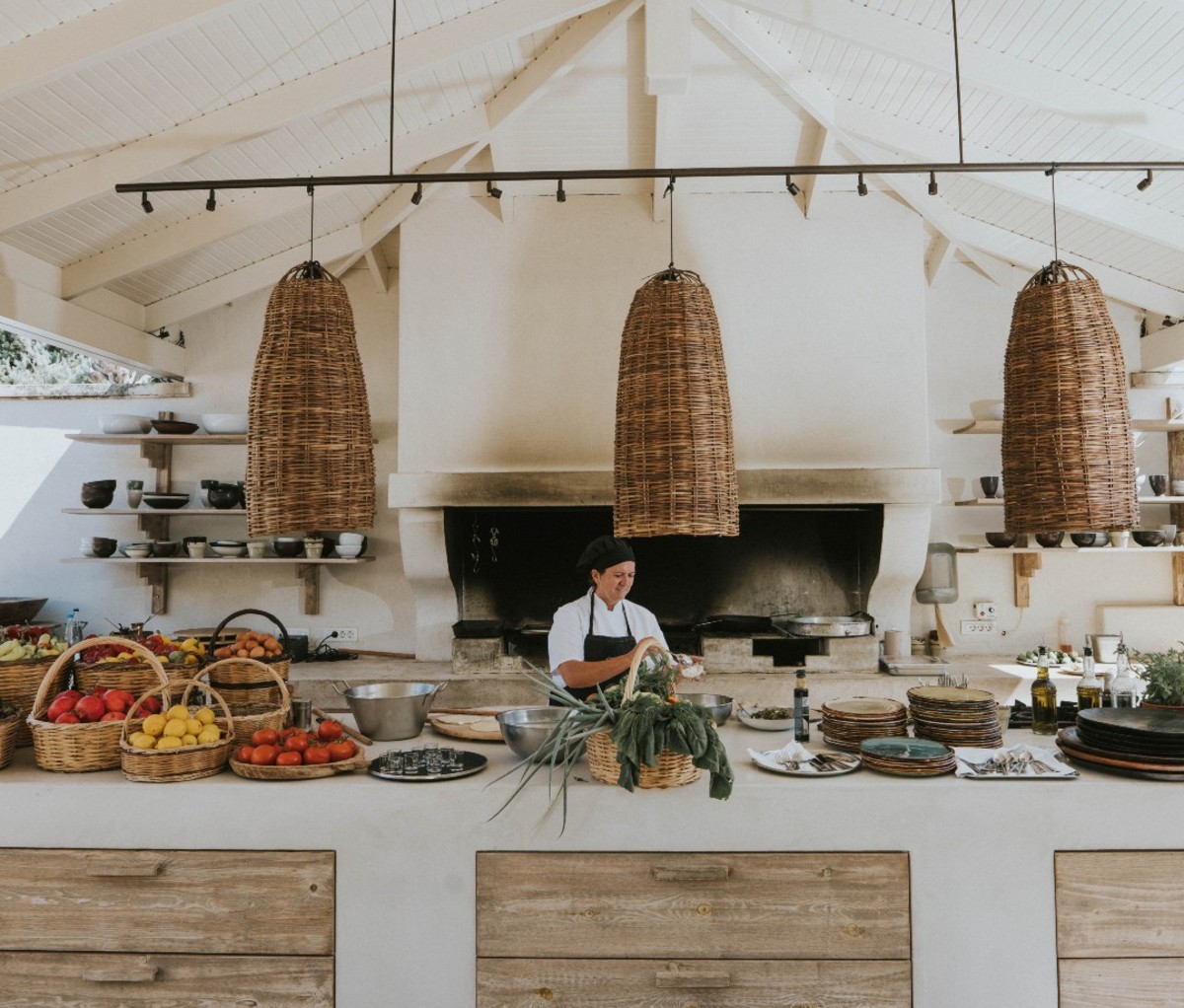
For a family-friendly, flavorful respite: Cretan Malia Park in Malia
A half-hour drive east from Heraklion, Cretan Malia Park feels like a desert oasis in tiny Malia. The distinguished design hotel might be buzzing with people—many of them on a family vacation, thanks to large pools, exquisite abodes, and a vast selection of eateries—yet it still feels remote and as liberating as the sea breeze. We had two of our best Cretan meals at the Mouries, and even got to hand-pick some of the vegetables in CMP’s onsite garden, press the kalitsounia cakes, and bake the bread. (This Cretan Soul lunch was one of many experiences you can try.)
We made time for chess and traditional Greek coffee among the hotel’s feline residents in their pebbled cafe garden and spent hours sunning by the sea. We also savored the live music from local talents over dinner each evening. Arguably the most striking part about Cretan Malia Park is its dedication to locally grown food and support of local talent, part of its ethos of Mediterranean Responsible Living. You can feel that in the fabric there, through its employees, its food, its facilities. A lot of care goes into this one, and you feel cared for, too.
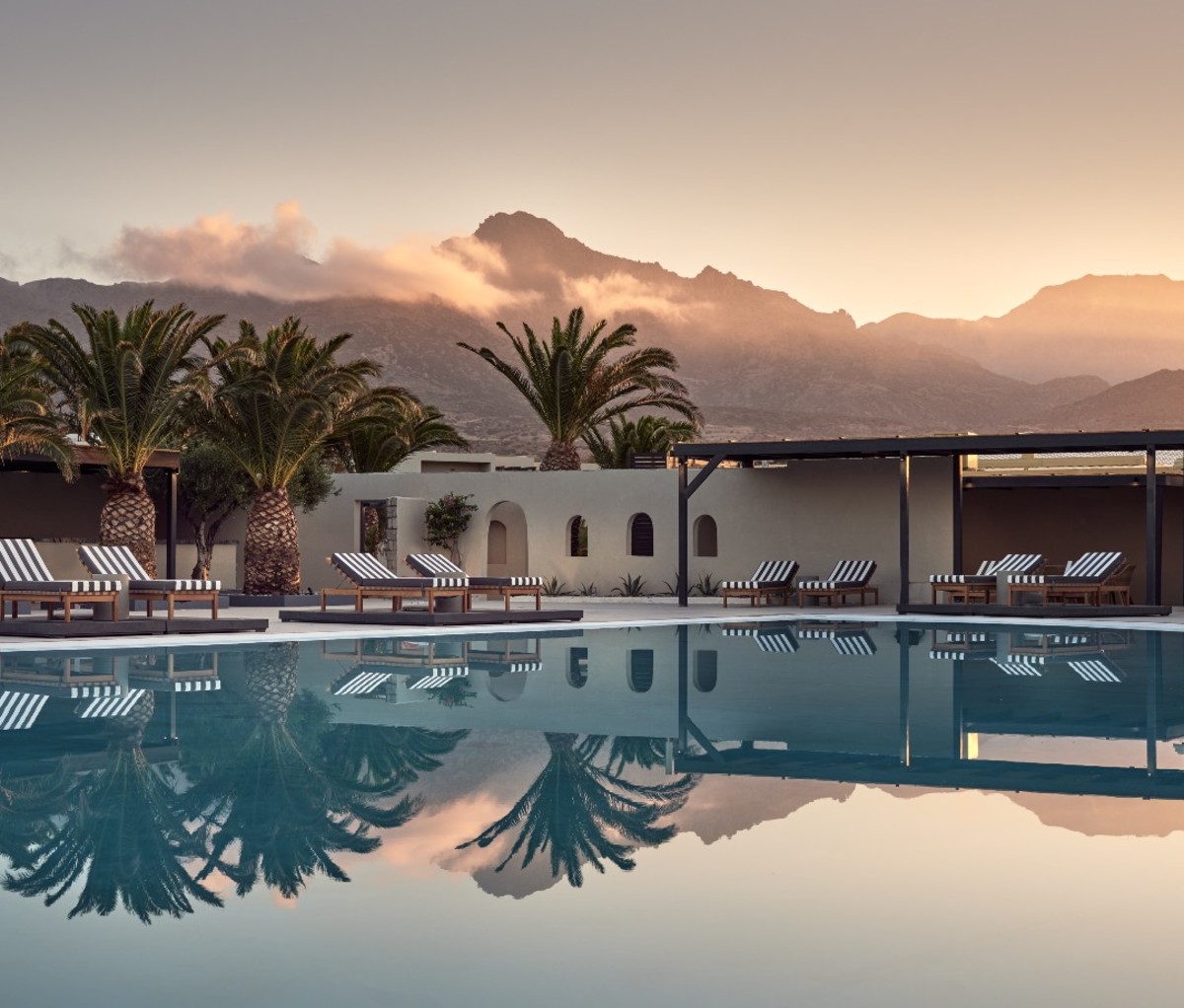
For a top-tier south-shore stay: NUMO in Ierapetra
I hope you’ll get to the southern part of the island on your visit (since the north houses most of its key cities). Just 90 minutes southeast of Heraklion is NUMO, in the greenhouse-dotted Ierapetra. This part of Crete feeds much of Europe with its cucumbers, potatoes, olives, tomatoes, and the likes. That gives you a taste for the fresh fare found at NUMO (between Menoa and Tamarisk), along with fresh seafood caught on the daily. The hotel is backdropped by mountains, which reflect off the centerpiece pool. (Just beyond that is the ocean, with extremely swimmable, refreshing water.) I would compare NUMO’s vibe to Ace Hotel Palm Springs, for those familiar.
There’s a hip crowd here, one that matches the hotel but still begs the question: “How did everyone get here, so far off the beaten path?” Some are getting certified in scuba diving (and you can, too!), others are lounging by the “quiet” pool in peace, and every guest gets a complimentary 15-minute massage in the onsite Etherea Spa (though of course you can book longer if you like). We love NUMO and Ierapetra’s proximity to the eastern shores of Crete, too, since they’re the most ignored due to being “too far out of the way.” But seeing as 90 minutes is how long it usually takes to get off the plane, inch through customs, and search for your luggage, well…here’s a layup of an easy decision.
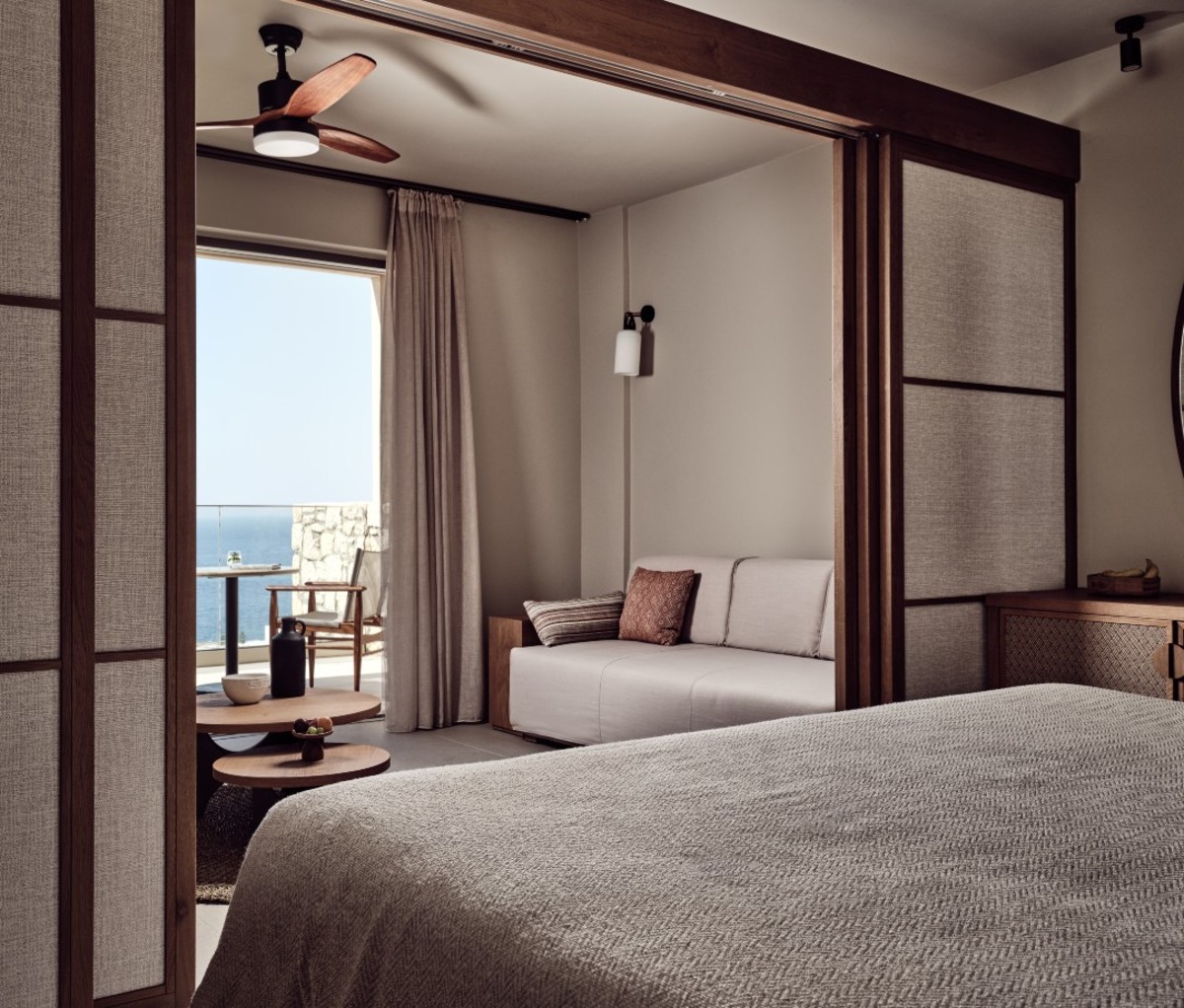
For a regal middle-ground between two capitals: The Royal Senses in Geropotamos
A lot of your touristing will be between Heraklion (the capital of the island, and of its own eponymous region), as well as Chania (the capital of its own eponymous region and the best access to beaches—as well as the locals’ unofficially ordained “most dynamic city”). So, why not park yourself midway between them? That’s exactly where you’ll find The Royal Senses in the region of Rethymno. It’s a restful, regal reprieve from days spent exploring the origins of humanity and divine beings—particularly at the lamb-centered resto Mitato. Come for the sea-view suites and private-pool villas, stay for the isolated spot along the water, and revel in the fact that you’re an hour from Crete’s two biggest hubs in either direction.
10 things to do in Crete away from the crowds
Again, we know you’re planning to visit Knossos Palace and hike the Samaria Gorge. And you shouldn’t miss those—but prepare for throngs of tourists. Here are some of the best places to point yourself for less-crowded recreation.
1. Take a sunset cruise to Dia Island
Funny that in this first suggestion, we’re advising you to actually leave Crete. It’s only for an evening, though. Since Crete itself is so big, you may start to feel like you’re on a mainland, whereas most Greek vacations suggest island hopping and eating cheese at sea. So, here’s your chance: Voyage on a yacht to nearby Dia Island from Heraklion. There are chances to swim and snorkel as the skies turn pink and life stands still. Take a picture in your mind and with your camera. Toast to your god with the local “ya mas!” cheers. This memory will last forever. (If your schedule is taut, you can do the same thing in the morning or midday, too.)
2. Try the Southern Shore beaches
OK, your Googling will tell you to visit Elafonissi, Balos, and Tsoutsouras. They’re great, but the secret is out. Instead, try the less-visited southern shore of the island. (And note, the four Cretan regions, west to east, look a lot like their capital cities, save for the fourth: Chania, Rethymnon, Heraklion, and Lasithi.) For fewer folks and perfect beach days, get to Sougia, Loutro, or Gavdos in Chania; Preveli or Agios Pavlos in Rethymnon; Vathi, Martsalo, or Agios Nikitas in Heraklion; and lastly, Xerokambos or Chrysi in Lasithi.
3. Do a Cretan wine tasting
Crete has 70+ family-owned vineyards, and not a meal should go by without you sampling from their local selection. The island has a 4,000-year old winemaking history. We assume you have some brushing up to do on your sampling of varietals like vilana, vidiano, dafni, thrapsathiri, muscat of Spina, plyto, kotsifali, mantilari, liatiko, tsardana, and of course, romeiko. (Do you follow?) If not, get to one or more of the island’s vineyards, most of which are in Heraklion. May we recommend Douloufakis, Lyrarakis, and Sinadakis.
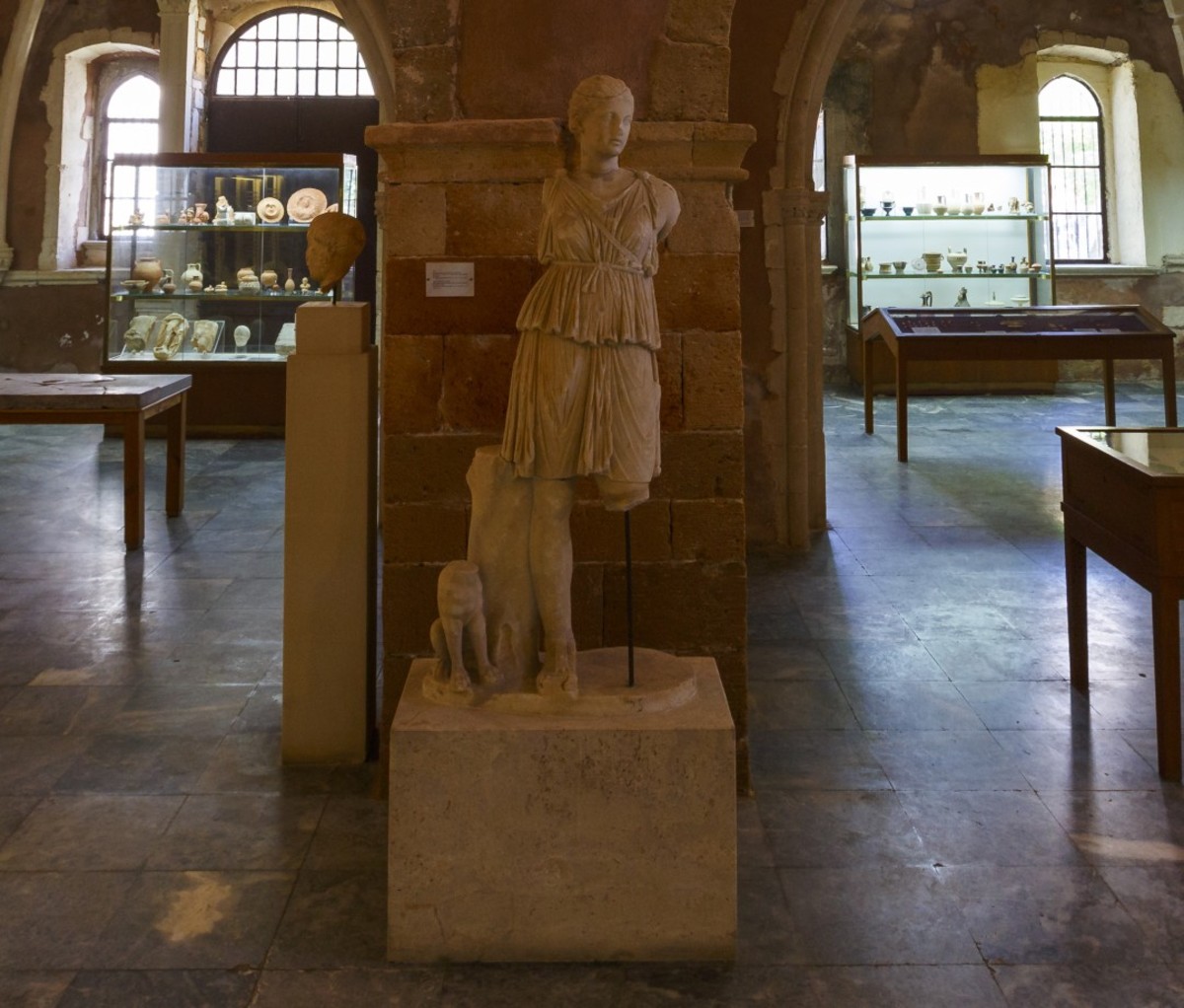
4. See Chania’s Archeological Museum
Heraklion’s archaeological museum gets most of the buzz, but Chania’s keeps pace too. At one end of its Venetian-church abode, it showcases artifacts from Neolithic Age through the Late Minoan era. At the other side, you’ll explore history between Geometric and Roman ages.
5. Visit Aptera Archaeological site
Some people say the Knossos visit feels a little “Disneyfied” in its reimagining of life there. But that of Aptera, 15km outside of Chania, gives visitors the same historic significance with far less fanfare—in a good way. Excavations there have revealed an ancient city some 4km in length. Don’t miss its ancient amphitheater, too.
6. Trace the birthplace of Zeus
Off the village of Psychro on the Lasithi plateau, you’ll find Diktaean Cave. Lore states is the birthplace of Zeus himself. While many of the objects recovered here have since moved to the Heraklion Archaeological Museum, the visit alone is jaw dropping as you walk some 250 meters into the cave’s belly. And if you need a double dose of Zeussian caves (or if you can’t make it as far east as Lasithi), check out Idaion cave in Rethymnon, which is where the top god is said to have grown up while hiding from his murderous father.
7. Relax at Lake Kournas
It’s surprising finding a lake in the middle of an island, but then again, Crete is a big island. More surprising is finding one as beautiful as Kournas. Of the handful of lakes on Crete, Kournas is the sole freshwater pick. Depending on when you visit (and when its water is lowest), you might get an extra ring of white sand around its shores. Either way, plan for a picnic, a dip, some paddle boating, imbibing at the local tavernas, and feeding the lake’s feathered, duck-billed residents.
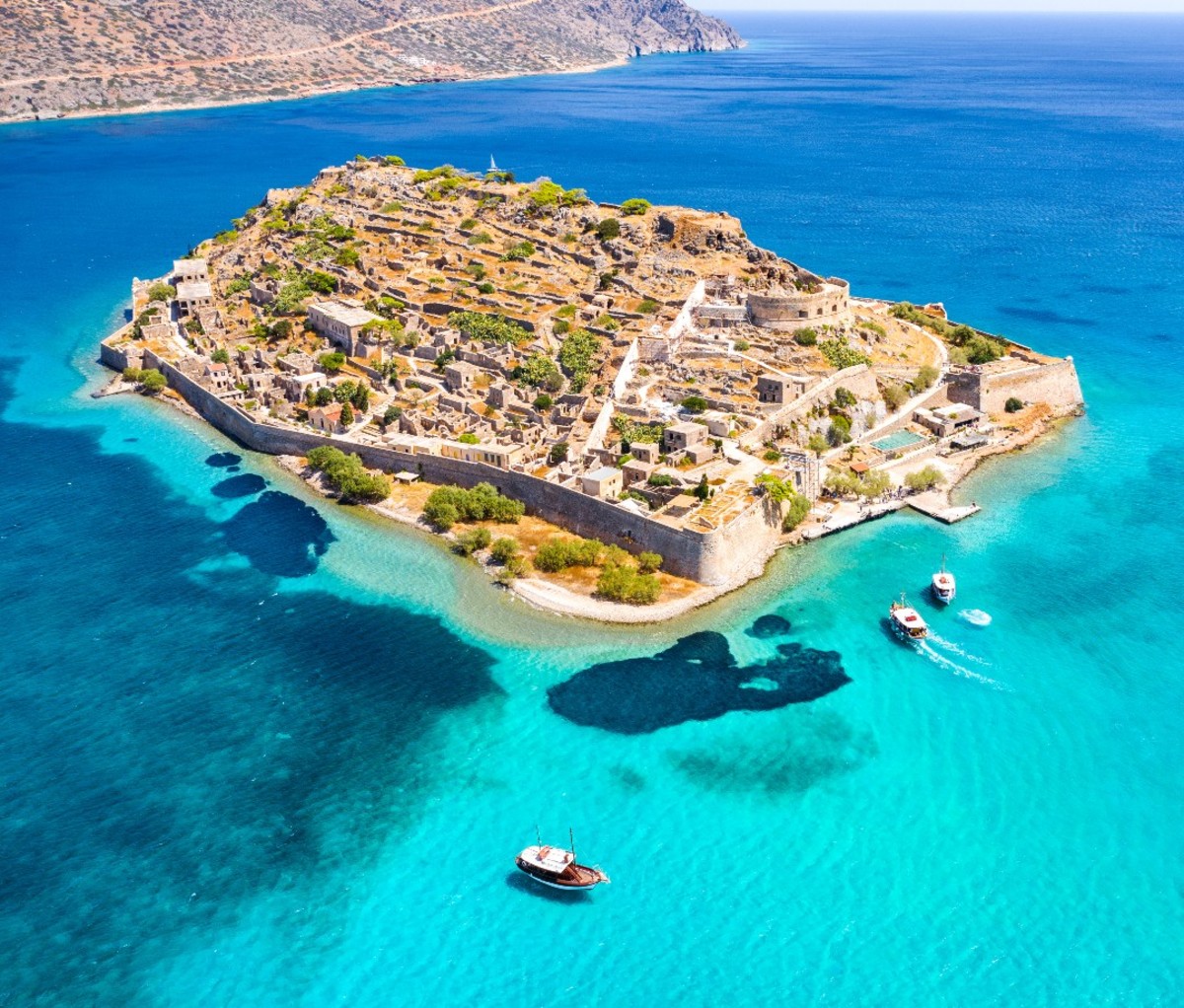
8. Explore Spinalonga Island
Most easily achieved from Agios Nikolaos, a boat cruise to Spinalonga Island is a must for two reasons. First, there’s the crystal blue bay waters and teeny, isolated beaches that make it recreationally intriguing. Then there’s the history of it all: This former fortress was more recently a leper colony, up until the early 1900s. You’ll also get to peep at Crete’s famed Kri Kri goats, which you’ll spot inhabiting their own neighboring island as you make the journey.
9. Cook like a local
You’ll long cherish the food and wine you taste in Cretan restaurants, plus the shot of raki each restaurateur forces you to take as you sign the bill. So, why not learn how to make some of it yourself? If only to say that you did it and that it tasted as great as the food you ordered? Sign up for a local cooking class, like Traditional Cooking Classes out of Heraklion. You’ll look at olive oil with a lot more reverence from here on out. Or, if you insist, you can rent a cook for a private dining treat. (And you should insist.)
10. Hike Psiloritis, with caution
Crete’s highest peak is no small feat: it’s over 8,000 feet and is part of Europe’s “E4” long-distance hike network. If this is something that calls your name, then read up on how to best prepare for the usually snow-capped trek. And if you aren’t prepared for that, then it’s a perfectly happy consolation prize to hike the ever-popular, ever-gorge-ous Samaria Gorge, crowds be damned.
from Men's Journal https://ift.tt/zo3fF2O


Great tips for exploring Crete! Renting a car makes visiting beaches and villages much easier. I used Cretarent during my trip and the experience was smooth and flexible. It really helped me discover places that aren’t easily reachable by public transport.
ReplyDelete